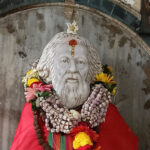Maa Tara, one of the most revered deities in Hinduism, holds a significant place in both Shakti worship and Tantric traditions. Known for her benevolent yet fierce nature, she is a symbol of divine protection, wisdom, and liberation. Her greatness has been recognized for centuries, and countless devotees have sought her blessings for peace, protection, and spiritual growth.
The Dashamahavidya and Ten Forms of Maa Tara
Maa Tara is known for being one of the Dashamahavidyas, the ten great wisdom goddesses in Tantric tradition. These ten forms—Kali, Tara, Bhairavi, Chhinnamasta, Dhumavati, Bagala, Matangi, Kamala, Bhuvaneswari, and Soroshi—are believed to represent different aspects of the divine feminine, each associated with a specific cosmic energy and power. According to Brihaddharma Puran, when Goddess Sati was denied entry to a yajna (sacrificial ritual) hosted by her father Daksha, she displayed her ten fearsome forms to compel Lord Shiva to allow her participation. These forms include both compassionate and terrifying aspects of the goddess, symbolizing the balance of creation and destruction.

The Legend of Ugratara
One of the most prominent forms of Maa Tara is Ugratara, a fiercer and more intense manifestation of her protective qualities. Ugratara is depicted as standing on Lord Shiva’s heart, with her right foot placed on his chest while her left foot hovers above his body. This form represents the goddess’ power to vanquish evil, offering protection to devotees from all kinds of fear and hardship.
Tara and Saraswati
Interestingly, in various traditions, Maa Tara is also closely linked with Saraswati, the goddess of wisdom and knowledge. In some texts, it is believed that Tara is a transformed aspect of Saraswati, who embodies not only wisdom but also the liberation (moksha) of her followers. In Buddhist Tantra, Tara is an essential deity, referred to as “China-char Tara,” revered in regions such as Nepal, Bhutan, and Tibet. She is recognized for her qualities of compassion and her ability to guide individuals toward enlightenment.
Tara in Various Forms
Maa Tara appears in different forms and names across various religious traditions. In some texts, she is known as Padmavati, Girja, or Amritkalashdharini, the bearer of the nectar of immortality. Each of these names highlights her multifaceted nature as both a destroyer of evil and a provider of peace and prosperity.
The Powerful Role of Tara in Tantra
As part of Tantric practices, Maa Tara is worshipped for her ability to remove obstacles and provide spiritual protection. Rituals dedicated to her are powerful, often performed with the intent of overcoming fear, gaining wisdom, and achieving liberation. Her worship involves chanting her 108 names, as found in the Aryata’s Bhattarikanamastottor, and participating in rituals that invoke her divine presence.
Maa Tara is a goddess who embodies the balance of creation, protection, and destruction. Whether seen as a manifestation of Saraswati or as a fierce protector in her own right, Tara is a deity who offers profound spiritual benefits. Her worship, through various forms and rituals, is a path toward peace, wisdom, and liberation. In her many appearances, from the peaceful to the fierce, Maa Tara guides her devotees through the complexities of life and the journey toward spiritual fulfillment.
Devotees visit Tarapith to seek blessings from Maa Tara, participate in rituals, and experience the spiritual energy of the place. The temple is particularly crowded during festivals and special occasions.





